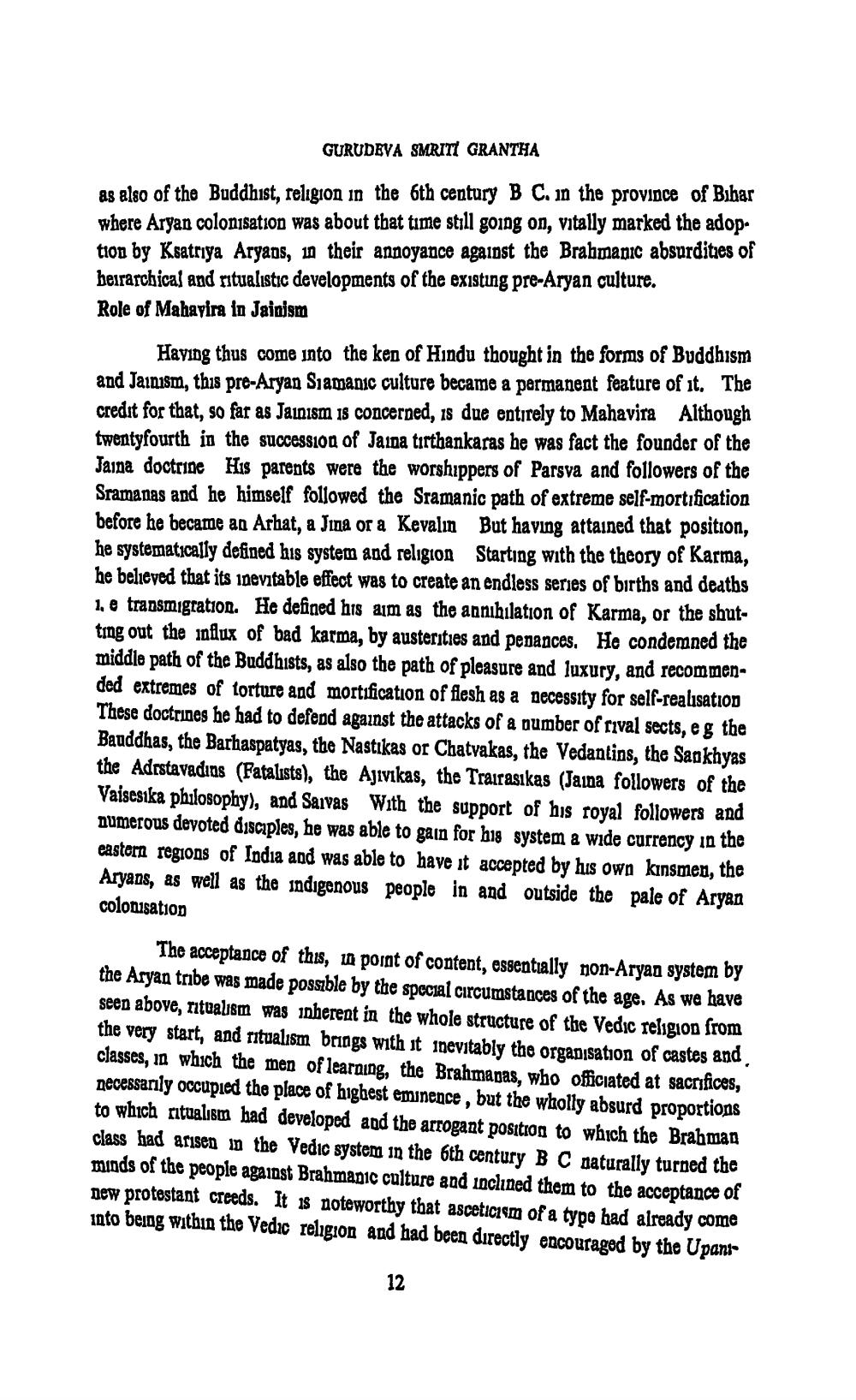________________
GURUDEVA SMRITI GRANTHA
as also of the Buddhist, religion in the 6th century B C. in the province of Bihar where Aryan colonisation was about that time still going on, vitally marked the adoption by Ksatriya Aryans, in their annoyance against the Brahmapic absurdities of beirarchical and ritualistic developments of the existing pre-Aryan culture. Role of Mahavira in Jainism
Having thus come into the ken of Hindu thought in the forms of Buddhism and Jainism, this pre-Aryan Siamanic culture became a permanent feature of it. The credit for that, so far as Jainism is concerned, is due entirely to Mahavira Although twentyfourth in the succession of Jaina tirthankaras he was fact the founder of the Jaina doctrine His parents were the worshippers of Parsva and followers of the Sramanas and he himself followed the Sramanic path of extreme self-mortification before he became an Arhat, a Jina or a Kevalin But having attained that position, he systematically defined his system and religion Starting with the theory of Karma, he believed that its inevitable effect was to create an endless series of births and deaths 1, e transmigration. He defined his aim as the annihilation of Karma, or the shutting out the influx of bad karma, by austerities and penances. He condemned the middle path of the Buddhists, as also the path of pleasure and luxury, and recommended extremes of torture and mortification of flesh as a necessity for self-realisation These doctrines he had to defend against the attacks of a number of rival sects, eg the Bauddhas, the Barhaspatyas, the Nastikas or Chatvakas, the Vedantins, the Sankhyas the Adrstavadins (Fatalists), the Ajivikas, the Trairasikas (Jaina followers of the Vaisesika philosophy), and Saivas With the support of his royal followers and numerous devoted disciples, he was able to gain for his system a wide currency in the eastern regions of India and was able to have it accepted by his own kinsmen, the Aryans, as well as the indigenous people in and outside the pale of Aryan colonisation
The acceptance of this, la point of content, essentially non-Aryan system by the Aryan tribe was made possible by the special circumstances of the age. As we have seen above, ritualism was inherent in the whole structure of the Vedic religion from the very start, and ritualism brings with it inevitably the organisation of castes and classes, in which the men of learning, the Brahmapas, who officiated at sacrifices, necessarily occupied the place of highest eminence, but the wholly absurd proportions to which ritualism had developed and the arrogant position to which the Brahman class had arisen in the Vedic system in the 6th century BC naturally turned the minds of the people against Brahmapic culture and inclined them to the acceptance of new protestant creeds. It is noteworthy that asceticism of a type had already come into being within the Vedic religion and had been directly encouraged by the Upant
12




